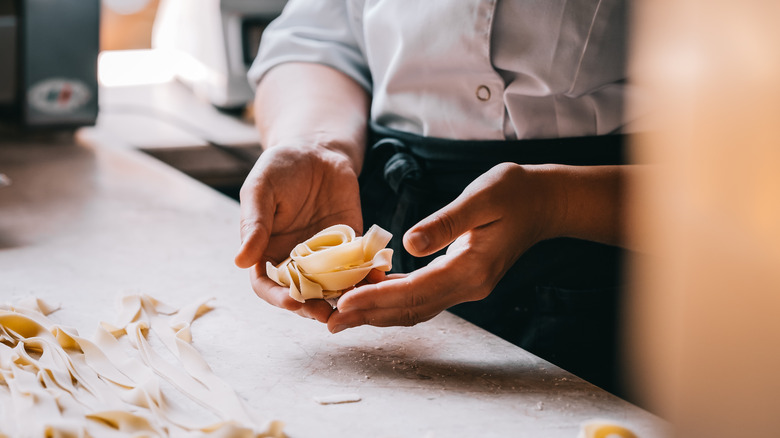Why It's Worth Buying Local Flour For Your Homemade Pasta Dough
Setting out to find locally produced flour might not be the first item on your to-do list as you prepare to make pasta from scratch, but the approach can result in a significant difference in your completed recipes. Searching for local flour not only connects you to a community of farmers you may have previously missed, but the ingredient can help you prepare a more flavorful, fresher dish for tonight's dinner.
While you may have noticed pasta with semolina and durum wheat labels sitting on shelves in the store, you have other options to choose from when making pasta at home. From the nutty, earthy flavors found in hard red winter wheat to sweeter red and white emmer flours, the places in which grains are harvested and how they are milled can impact the final taste of the flour — and the final taste of your homemade plates of noodles. Regional flours can offer unique tastes to flavor your recipes, as freshly milled grains offer a distinct taste from those packaged and placed on a shelf.
Making fresher plates of pasta
Because the smell and the texture of local flours can vary, regional products can take some practice when incorporated into your go-to pasta recipes. Softer flours that contain less protein will contribute to stretchier dough ideal for making noodles, while harder flours with higher protein content can offer the form you need for more precisely formed shells. You can experiment with ratios, combining different kinds of flour to yield the dough that is right for your culinary creations.
Though flour production went through some changes in the 1900s, with companies using roller mills to process shelf-friendly grains, local mills continued to grind flour in whole pieces and in smaller batches. Farmers have remained committed to growing crops that offer unique characteristics, providing an ingredient that yields a flavorful finesse instead of a mere culinary necessity. Some supermarket aisles are beginning to stock more diverse flour varieties, but you may have to specifically shop for and demand flour that may not be found in more conventional markets. Locating local mills may take some detective work, but several online resources have set out to list farms that sell flour and grains so that you can make tonight's pasta taste uniquely flavored and fresh.

